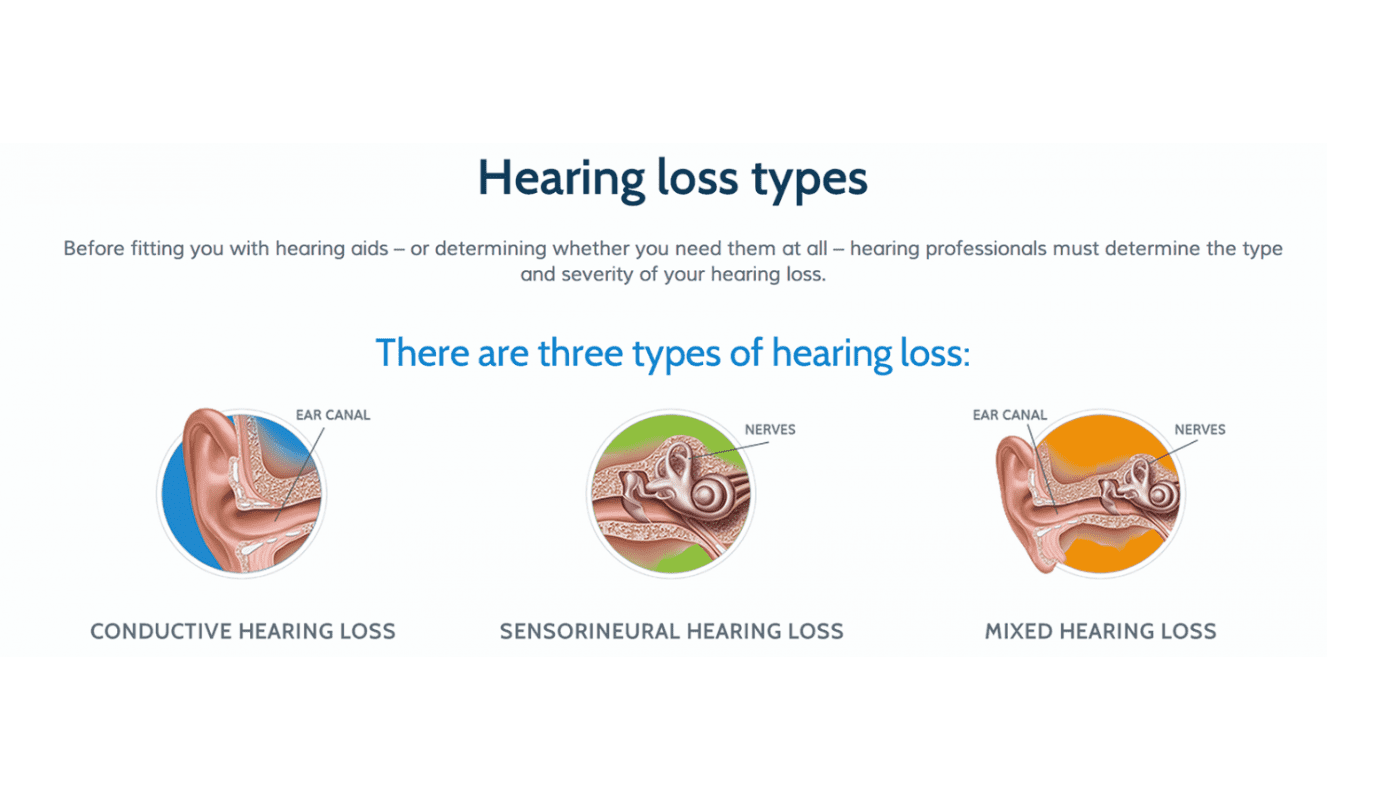
- shaid
- Posted on
The reason behind hearing loss is not the same for everyone, nor does the type. Even the causes and symptoms behind it are also different from person to person. Some may feel muffing of the sound while others feel severe pain, and so on.
It’s essential to know each type of hearing loss even if you are not undergoing any symptoms because it assists you in taking proper preventative steps.
The type of hearing loss you have depends on the physical location of the problem within the ear. There are three main types of hearing loss-
- Conductive hearing loss
- Sensorineural hearing loss
- Mixed hearing loss
Let’s learn the three types of hearing loss and their significant symptoms.
Conductive Hearing Loss
When the ability to carry sound from the outer and middle ear into the inner ear is reduced or lost, this hearing loss is commonly identified as conductive hearing loss. This might be due to the hindering of the ear canal by something, like earwax or fluids, or the problem might come from illness or allergies. An ear infection or a perforated eardrum is also a possible cause.
The conductive hearing loss causes the “volume” of sounds to seem lower, unlike other hearing losses that make both the hearing and an understanding of sounds difficult, either temporary or permanent.
In some cases, conductive hearing loss can be treated by simply clearing the excessive wax or fluids out of the ear canal. Or in others, it can be treated by hearing aids or surgically inserted devices.
Symptoms
Symptoms of conductive hearing loss can differ based on the specific cause and seriousness but may include-
- Inaudible hearing
- An unexpected or steady loss of hearing
- Complete or muggy sensation in the ear
- Light-headedness
- Ear draining
- Tenderness or pain in the ear
Sensorineural Hearing Loss
If you face sensorineural hearing loss, that indicates the difficulty, which happens either in the hearing nerve lane or cochlea from the inner ear to the brain. Things such as illness, age, genetics, head trauma, noise exposure, and so on can all worsen these parts’ capacity to perform. Regrettably, all these parts are not wavering.
People with sensorineural hearing loss have faced some problems with volume and transparency, mainly when it gets to grasp the speech. Sounds may seem muted, and people who were talking may look to stutter.
Sensorineural hearing loss can ultimately be treated with the help of hearing aids, which increase and process the nearby sounds so you can both understand as well as listen to them. The research has shown that 95% of all hearing losses can be treated by hearing aids.
Symptoms
Symptoms of Sensorineural hearing loss that may comprise:
- Softened hearing
- Face some hurdles to understand the speech
- The steady or sudden loss of hearing
- Stuffy or full sensibility in the ear
- Resounding in the ear
- Unsteadiness
Mixed Hearing Loss
People who have faced both conductive and sensorineural symptoms of hearing loss usually say that it’s a problem of a mixed hearing loss. This type of problem usually occurs when there is a blockage or injury in the outer or middle ear and the cochlea or auditory nerve in the inner ear. Mixed hearing loss generally originated from a compound of factors, which present conductive hearing loss and those that give to sensorineural hearing loss.
Hearing healthcare specialists usually find it helpful to handle the conductive circumstances primarily in view of the fact that they can often cure. Later they will be capable of reasonable access to your sensorineural hearing loss and provide tools to help you.
Symptoms
The mixed hearing loss symptoms will be the combination of the conductive and Sensorineural symptoms listed above.
